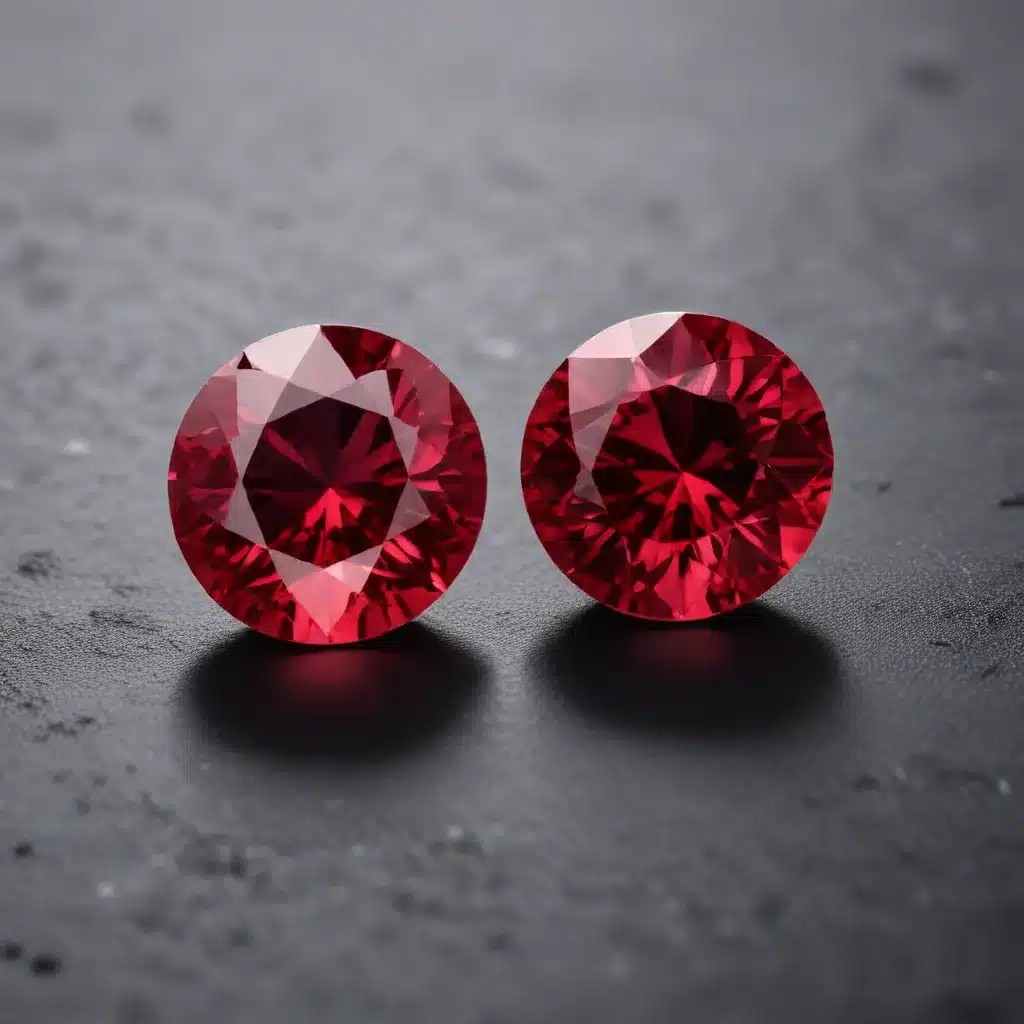
In the captivating world of gemstones, synthetic rubies have emerged as a remarkable alternative to their natural counterparts. These lab-grown beauties possess the same alluring red hues and exceptional durability that have long made rubies a coveted treasure, but with a twist – their creation in controlled environments allows for unparalleled consistency and affordability. As a gem expert at Shelby Gem Factory, I’m thrilled to delve into the fascinating history, science, and benefits of these synthetic marvels.
Defining Synthetic Rubies
Synthetic rubies, also known as lab-created rubies, are chemically and physically identical to their natural counterparts, but they are produced in a laboratory setting rather than mined from the earth. These gemstones are created by replicating the high-temperature and high-pressure conditions found deep within the Earth’s crust, where natural rubies form. By precisely controlling the growth process, scientists can produce corundum (the mineral that makes up rubies and sapphires) with the same crystal structure and chemical composition as natural rubies, but without the impurities and inclusions that can affect the quality and value of natural stones.
The History of Synthetic Ruby Production
The pursuit of creating synthetic rubies has a rich history, dating back to the late 19th century. In 1837, French chemist Auguste Verneuil developed a groundbreaking technique known as the Verneuil process, which allowed for the production of synthetic sapphires and, later, synthetic rubies. This flame-fusion method involved melting aluminum oxide (the main component of corundum) and carefully adding chromium oxide to achieve the desired red hue. Over the decades, advancements in technology have led to the development of hydrothermal and flux-growth techniques, further refining the process and improving the quality of synthetic rubies.
Characteristics of Synthetic Rubies
Synthetic rubies share many of the same physical and optical properties as their natural counterparts, but with a few key differences. Visually, synthetic rubies may appear slightly more uniform in color and clarity, as the controlled laboratory conditions allow for the elimination of many natural imperfections. They also often exhibit larger crystal sizes compared to natural rubies, as the growth process can be optimized for size. However, experienced gemologists can often detect subtle differences in the inclusion patterns and growth structures of synthetic rubies, allowing them to differentiate these lab-grown gems from their natural counterparts.
The Benefits of Synthetic Rubies
Cost-Effectiveness
One of the primary advantages of synthetic rubies is their affordability. By eliminating the time-consuming and resource-intensive process of mining natural rubies, synthetic varieties can be produced at a fraction of the cost, making them more accessible to a wider range of consumers. This cost-effectiveness allows individuals to enjoy the beauty and allure of rubies without the hefty price tag often associated with natural gems.
Consistent Quality
Synthetic ruby production techniques enable a level of quality control that is difficult to achieve with natural gems. Each synthetic ruby can be meticulously crafted to possess the desired color, clarity, and cut, ensuring a high degree of consistency and predictability in the final product. This consistency is particularly valuable for jewelry designers and manufacturers who require a reliable supply of high-quality gemstones.
Ethical Considerations
In addition to their cost-effectiveness and consistency, synthetic rubies also offer an ethical alternative to natural gems. The mining of natural rubies, particularly in some regions, has been associated with environmental damage and human rights concerns. Synthetic rubies, on the other hand, are produced in controlled laboratory settings, eliminating the need for resource-intensive and potentially harmful mining operations.
The Beauty of Synthetic Rubies
Optical Properties
Synthetic rubies exhibit the same remarkable optical properties as their natural counterparts, including a high refractive index and dispersion (the ability to split light into its component colors). These optical characteristics contribute to the gemstone’s brilliance and fire, captivating the eye with their mesmerizing sparkle and dance of color.
Color Variations
While the classic deep-red hue is the most sought-after in rubies, synthetic varieties can also be produced in a range of color variations, from pale pink to vibrant, purplish-red tones. This versatility allows for greater creative expression in jewelry design, catering to a diverse range of personal preferences and style sensibilities.
Brilliance and Clarity
The controlled growth conditions of synthetic rubies often result in higher clarity and fewer inclusions compared to natural rubies. This enhanced clarity, combined with the precision of modern cutting and polishing techniques, allows synthetic rubies to exhibit a exceptional brilliance and visual appeal, rivaling or even surpassing the beauty of their natural counterparts.
The Science Behind Synthetic Rubies
Crystal Growth Techniques
The production of synthetic rubies relies on advanced crystal growth techniques, such as the Verneuil process, hydrothermal growth, and flux growth. These methods involve carefully controlling the temperature, pressure, and chemical composition to facilitate the formation of corundum crystals with the desired properties.
Gemological Analysis
Distinguishing synthetic rubies from their natural counterparts requires the expertise of trained gemologists. They utilize various analytical techniques, including spectroscopy, X-ray diffraction, and microscopic examination, to identify the unique inclusion patterns and growth structures that can serve as “fingerprints” for these lab-grown gems.
Technological Advancements
The field of synthetic gemstone production is continuously evolving, with researchers and manufacturers exploring new techniques and materials to enhance the quality, size, and efficiency of synthetic ruby production. These technological advancements, coupled with a growing understanding of the science behind gem formation, have paved the way for the creation of flawless, vibrant, and cost-effective synthetic rubies that captivate both jewelry enthusiasts and industry professionals alike.
In conclusion, the rise of synthetic rubies has revolutionized the world of gemstones, offering a brilliant and accessible alternative to their natural counterparts. As a gem expert at Shelby Gem Factory, I’m excited to witness the ongoing advancements in this field and to share the beauty and benefits of these lab-grown marvels with our customers. Whether you’re seeking an ethically-sourced, cost-effective, or consistently high-quality ruby, the synthetic variety may just be the perfect choice for your next jewelry creation or personal adornment.

